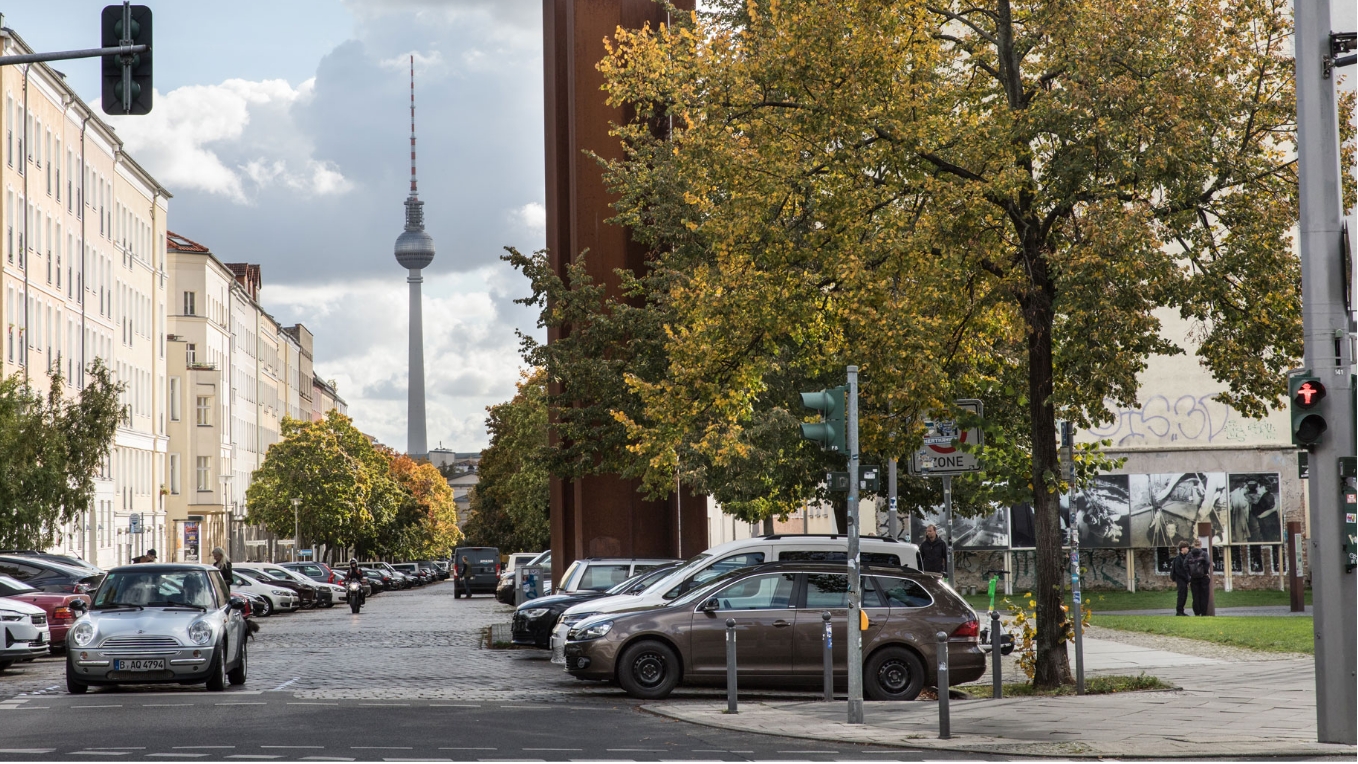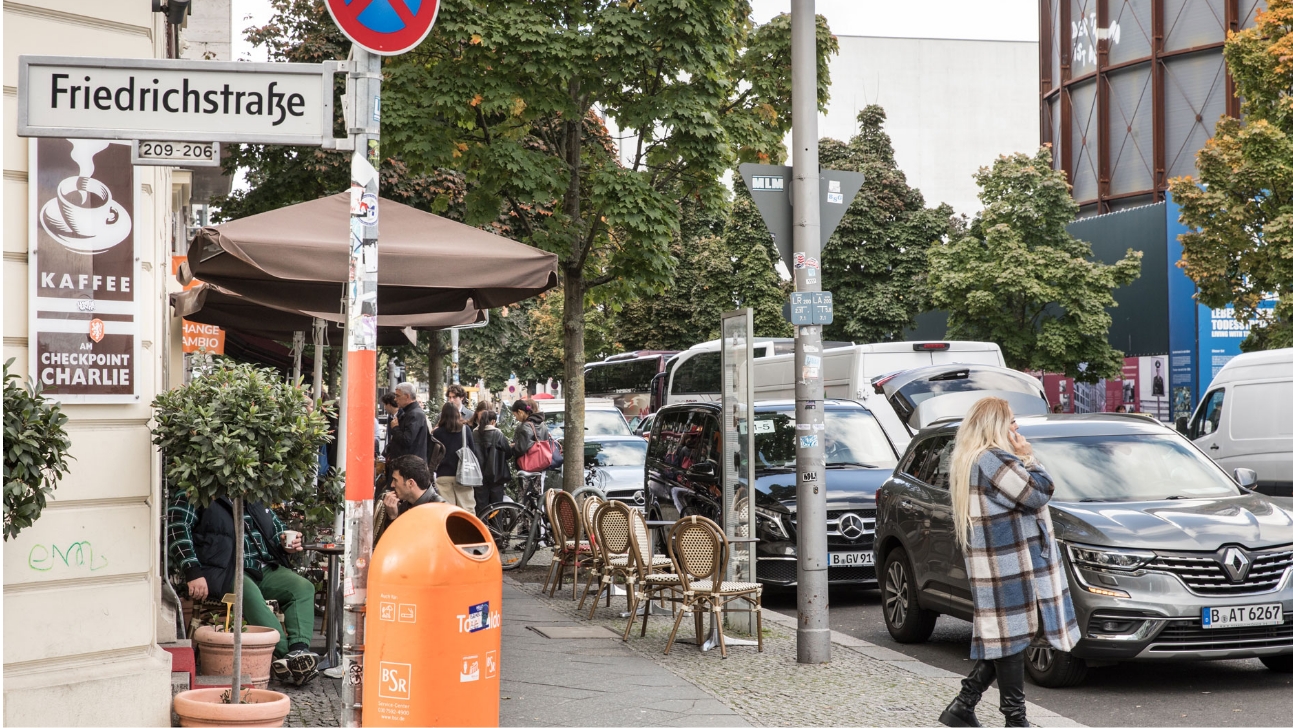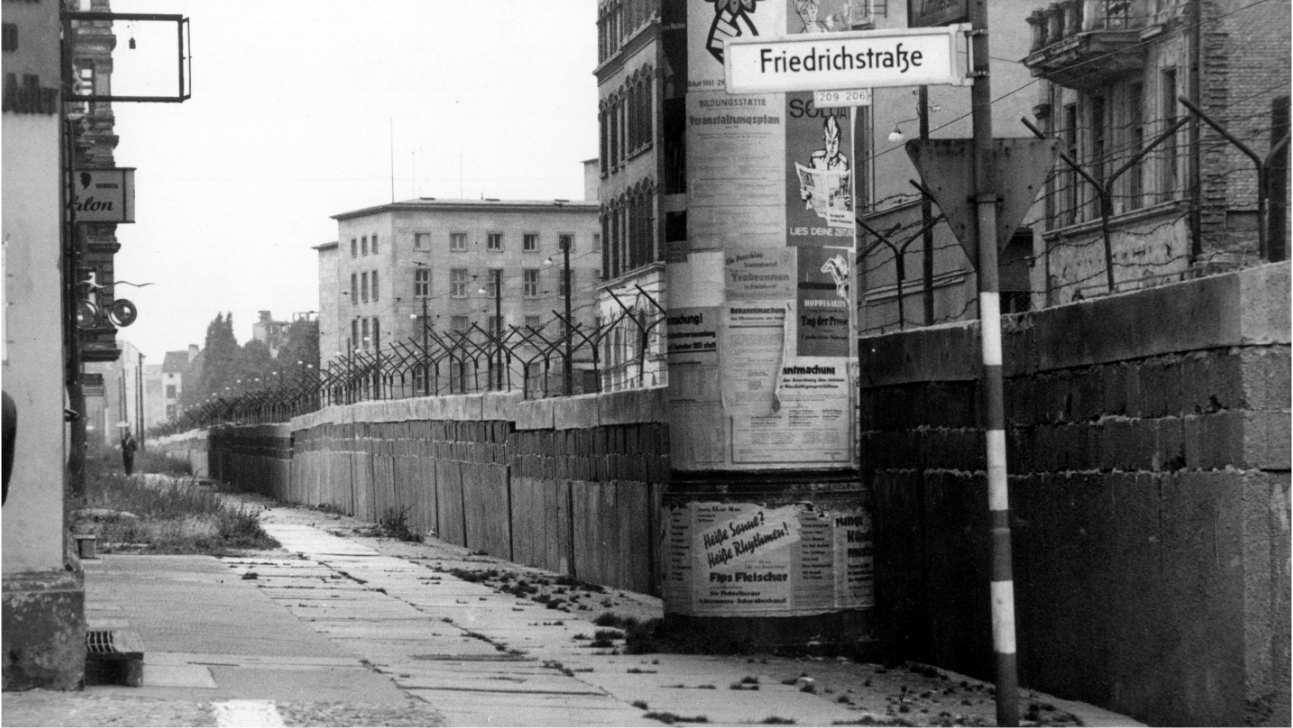Chapter
- The division of Germany 13 August 1961
- The Berlin Wall falls after 28 years 9 November 1989
- Shaped by change Art and culture
- The next generation Preserving freedom
- A journey through time Berlin past and present
- Traces of the Berlin Wall Experiencing history

Fall of the
Berlin Wall
Kim Berg, Jessica Krauß, Anja Leuschner and Luca Rehse-Knauf
East and West Germany were divided for 28 years. The border between the two was reopened on 9 November 1989. This didn’t yet mean that Germany was reunited, however, as a visa was still needed to cross the border until 1990. People nonetheless celebrated the fall of the Berlin Wall. It was a day of tears of joy, jubilation and freedom - we commemorate this special day and ask what 9 November still means today.
The division of Germany 13 August 1961
The Second World War ended in Europe when the German army, the Wehrmacht, surrendered unconditionally on 8 May 1945. This ushered in the division of Germany and Europe. The four victorious powers - France, Great Britain, the USA and the Soviet Union - divided Germany into four occupation zones. The capital Berlin was also split into four zones. Until 1948, the Western allies - France, Great Britain and the USA - combined their zones to form the “Trizone”.
Irreconcilable differences of opinion between the Western allies and the Soviet Union resulted in two states being founded in 1949. The Federal Republic of Germany was founded on the territory of the Trizone with the signing of the Basic Law on 23 May 1949. On 7 October 1949, the Soviet occupation zone became the German Democratic Republic (GDR). Berlin remained split, West Berlin being entirely surrounded by GDR state territory. Bonn became West Germany’s seat of government and later its capital.
Whereas West Germany was a democratic state, East Germany became a dictatorship, just like all the Eastern Bloc countries under Soviet rule. Many people in the GDR were unwilling to accept the country’s political and economic system. A massive exodus already began in the late 1940s, with the result that an estimated 2.7 to 4 million people had left the GDR by August 1961 - up to a sixth of its population. The GDR had already started closing its border to West Germany in 1952. Finally, the GDR hermetically sealed the border to the West by building a wall through and around Berlin on 13 August 1961.
The Berlin Wall falls after 28 years 9 November 1989
There was growing dissatisfaction in the GDR in the 1980s. The economic situation was poor and consumer goods were in scarce supply. What is more, the great majority of GDR citizens were not allowed to travel to the West, not even to visit their relatives. At the same time, they would hear from their families on the other side of the border and see on television how well people in the West were faring.
Mikhail Gorbachev was appointed general secretary of the USSR on 11 March 1985. He initiated a policy of reform and granted the satellite states in the Eastern Block substantial autonomy. While this led to reforms in Poland and Hungary, the ruling SED party stuck to its course in the GDR. Many people fled to Austria via Hungary or to the German embassy in Prague. The first Monday demonstration was held in Leipzig on 4 September 1989. Every week, more and more people took part in demonstrations across the country. On 30 October, 300,000 people took to the streets in Leipzig alone.
SED General Secretary Erich Honecker stepped down on 18 October 1989. He was succeeded by Egon Krenz. When Czechoslovakia opened its borders to West Germany for GDR citizens, prompting another mass exodus, the SED was forced to act. It planned a new travel law in an attempt to calm the situation and reassure people.


Shaped by change Art and culture
The period of upheaval in Germany and the fall of the Berlin Wall had a major impact on an entire generation of artists and cultural professionals. Division, unification, new beginnings and freedom appear as motifs in literature, music and painting. Such works address what had happened, critically engage with the process of reunification and keep memories alive.
“Freedom, thou shining spark of God!”
Two concerts were held at Christmas 1989 as a musical expression of the joy. Musicians from Munich, Dresden, London, Paris, New York and the then city of Leningrad performed the “Berlin Celebration Concerts” at the Philharmonie concert hall in West Berlin on 23 December 1989 and at the Schauspielhaus theatre in East Berlin on 25 December. Legendary US conductor Leonard Bernstein conducted the choir and the orchestra. And is if all of that were not symbolic enough: the global star at the conductor’s stand had Friedrich Schiller’s “Ode to Joy” from Ludwig van Beethoven’s 9th symphony reworded. Instead of “Joy, thou shining spark of God” he had the choir sing “Freedom, thou shining spark of God”.

Art for freedom
In 1984, Kiddy Citny and fellow artist Thierry Noir painted parts of the Berlin Wall for the first time. “We wanted to surround East Berlin with art,” says Kiddy. Although they painted on the West side of the Wall, they were nonetheless on GDR state territory. The artist is one of the pioneers of the street art movement in Germany and became known internationally as the “Wall painter”. His colourful art symbolises peace, freedom and humanity. Kiddy Citny’s works can be seen today in museums and galleries around the world. Some of his Berlin Wall paintings feature in the East Side Gallery, which is the longest surviving stretch of the Wall in Berlin.

The next generation Preserving freedom
My parents grew up in the GDR. They experienced what it is like to have their civil liberties curtailed. That is not so long ago and always reminds me that the freedoms we enjoy in Germany today could also disappear again. I was taught at an early age that civil liberties cannot be taken for granted. We must all take action to preserve our freedom.The fact that I can openly express criticism of the parties in government or that I can take to the streets to demonstrate for democracy cannot be taken for granted.

I believe freedom of expression is extremely important, especially given Germany’s past. There was no freedom of expression in the GDR. That’s why I want to use the voice I have to campaign for issues that are important to me. These include, for example, social justice and the representation of young people in rural areas. Since July 2024, I’ve also been talking about this in the ‘Ortskontrollfahrt’ podcast, which I host together with Jakob Springfeld. We use this podcast to chat with young people from Eastern Germany and hear their views. This involves us travelling to their home towns and talking about what it’s now like to grow up in Eastern Germany. I believe the topic of Eastern and Western Germany to be of crucial importance. I’d like us to communicate more and jointly consider how we can overcome the differences that still exist. I also use social media to interact with others who don’t share my opinion - that’s an important part of freedom of expression.We can be proud of being a country that is held together by values such as freedom, justice and unity.
A journey through time Berlin past and present
Traces of the Berlin Wall Experiencing history
- Checkpoint Charlie
- Checkpoint Bravo border crossing
- East Side Gallery
- Oberbaum bridge
- The “Palace of Tears” at Friedrichstrasse railway station
- Berlin Wall Memorial, Bernauer Strasse
- Brandenburg Gate
- Brandenburg Gate
Tour guide Jonny Whitlam will be happy to show you the Berlin Wall Memorial

In commemoration
In a century scarred by catastrophic wars, the fall of the Berlin Wall and the period leading up to Germany’s reunification went down in history as a “peaceful revolution”. All the same, the years before had cost many people their lives. At least 140 people died at the Berlin Wall between 1961 and 1989 in connection with the GDR’s border regime - most were killed by GDR border guards while attempting to escape.
The history of Germany’s division is commemorated in many places today, with numerous memorial sites in Berlin alone. Like at Friedrichstrasse railway station - the “Palace of Tears” - where East Germans had to say goodbye to their visitors from the West. The main commemorative site, the Berlin Wall Memorial with its documentation and visitor centres and its “Chapel of Reconciliation”, is to be found on Bernauer Strasse.
Tour guide Jonny Whitlam will be happy to take you on a tour of the Berlin Wall cycle trail

Traces of the Berlin Wall
When the Berlin Wall was opened in 1989, many Germans set off with a hammer or chisel to chip off their own little chunk of concrete - a collective form of demolition and a way of preserving memories. As monuments to division and artefacts of the Cold War, chunks of the Berlin Wall are nowadays to be found all over the world, such as in Brazil, Japan, Mexico, Russia and South Africa.
The Berlin Wall trail now follows the course of the former border in Berlin. The former Checkpoint Bravo and Checkpoint Charlie border crossings, the East Side Gallery featuring Wall art like the famous “fraternal kiss”, and the Oberbaum bridge that links the east and west of Berlin, are just a few of the many sights on the way. The Berlin Wall trail - 160 kilometres of history to be experienced.































